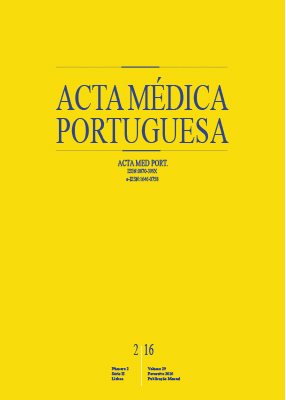Recent surgical advances in Peyronie’s Disease
DOI:
https://doi.org/10.20344/amp.6317Keywords:
Penile Induration/surgery, Penile Prosthesis, Penis/surgery, Urologic Surgical Procedures, Male.Abstract
Introduction: Peyronie’s disease, a fibrotic disorder of the tunica albuginea of the penis, has been associated with penile shortening and some degree of erectile dysfunction. It affects patient’s quality of life, leading to severe psychological, mental, and physical stress. Penile deformation hampers sexual life leading to depression, lack of sexual confidence, loss of sexual function and performance anxiety. Peyronie’s disease etiology is yet to be known.
Material and Methods: Literature search was conducted in Medline, Embase, and Cochrane databases in January 2015 in order to identify papers related to Peyronie’s disease, concerning evolving surgical management, technique, outcomes as well as ancillary treatments. Publications not concerning humans were not considered. We identified original articles, review articles, and editorials addressing the subject. All articles published in the English language were selected for screening. The eligibility criteria for inclusion were based on relevance concerning the subject.
Results: The variety of penile deformities associated with Peyronie’s disease still doesn’t have an effective and reliable non-surgical therapy. We summarize the updated surgical techniques and management algorithm described for Peyronie’s disease.
Discussion: Surgical management shares similar goals: correcting the curvature, preserving erectile function and penile length, and minimizing morbidity.
Conclusion: To date there is no high level of evidence-based data to determine the best surgical treatment of Peyronie’s disease. After proper diagnosis, surgical reconstruction should be based on giving a functional penis, that is, rectifying the penis with rigidity enough to enable sexual intercourse.
Downloads
Downloads
Published
How to Cite
Issue
Section
License
All the articles published in the AMP are open access and comply with the requirements of funding agencies or academic institutions. The AMP is governed by the terms of the Creative Commons ‘Attribution – Non-Commercial Use - (CC-BY-NC)’ license, regarding the use by third parties.
It is the author’s responsibility to obtain approval for the reproduction of figures, tables, etc. from other publications.
Upon acceptance of an article for publication, the authors will be asked to complete the ICMJE “Copyright Liability and Copyright Sharing Statement “(http://www.actamedicaportuguesa.com/info/AMP-NormasPublicacao.pdf) and the “Declaration of Potential Conflicts of Interest” (http:// www.icmje.org/conflicts-of-interest). An e-mail will be sent to the corresponding author to acknowledge receipt of the manuscript.
After publication, the authors are authorised to make their articles available in repositories of their institutions of origin, as long as they always mention where they were published and according to the Creative Commons license.









